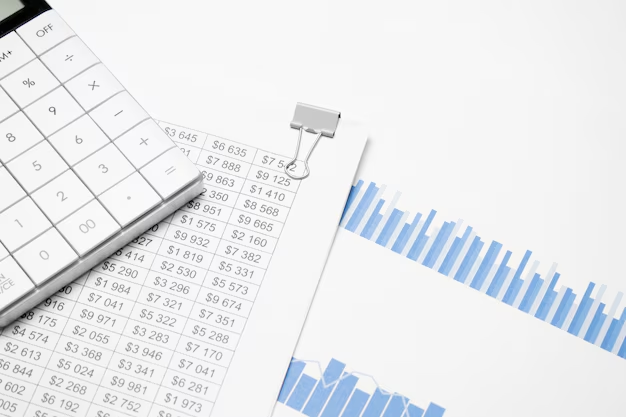Understanding VCIT Dividend Schedules: What Investors Need to Know
Investing in bonds has long been a favored strategy for those seeking a balance between risk and return. Among the many options available, the Vanguard Intermediate-Term Corporate Bond ETF (VCIT) is popular due to its focus on investment-grade corporate bonds with medium-term maturities. A crucial aspect for investors eyeing VCIT is understanding its dividend payout frequency and how these dividends could impact their portfolio's performance over time. This guide will walk you through the essentials of VCIT’s dividend distribution, along with providing valuable insights and perspectives to aid your investment decisions.
📅 How Often Does VCIT Pay Dividends?
VCIT pays dividends monthly, which is an attractive feature for income-focused investors. This regular payout schedule helps investors benefit from a consistent income stream, which can be particularly beneficial for those who rely on investment returns as a source of income, or for reinvestment purposes to leverage the power of compounding.
Why Monthly Dividends?
Monthly dividends offer several advantages:
- Regular Income Stream: Receiving income every month can help investors better plan their finances, particularly retirees or those with fixed expenditures.
- Reinvestment Opportunities: With dividends coming in monthly, investors have the chance to reinvest these funds more frequently, potentially boosting overall investment growth.
- Smoothing Out Risks: Monthly payouts can help smoothen out market fluctuations, offering a stabilizing effect in uncertain financial climates.
Historical Trends in VCIT Dividends
Understanding past payout patterns can provide an idea of future expectations. Historically, VCIT has maintained a consistent monthly dividend payment. While the actual amount per dividend can fluctuate due to changes in interest income from the bond holdings or macroeconomic factors, the regularity of payments generally remains stable.
🔍 Key Considerations for VCIT Investors
While the monthly dividend feature is appealing, several factors must be considered to maximize your investment potential with VCIT.
Tax Implications
Dividends from bond ETFs like VCIT are typically taxed as ordinary income. This means the tax rate of your dividends can be equivalent to your regular income tax rate, which is crucial to bear in mind for tax planning.
Interest Rate Sensitivity
As a bond ETF, VCIT’s performance is sensitive to interest rate changes. When interest rates rise, bond prices generally fall, affecting the ETF’s net asset value (NAV) and potentially its dividend yield. Thus, monitoring interest rate trends can be crucial for those invested in VCIT.
Portfolio Diversification
While VCIT can provide a steady income and defensive position due to its investment-grade holdings, it's essential to maintain a diversified portfolio aligning with your risk tolerance. Complement VCIT's fixed-income stability with assets in equities or real estate to create a balanced approach.
📈 Performance Insights & Investor Strategies
Understanding the performance metrics of VCIT can illuminate the potential ways this ETF can align with your investment goals.
Evaluating Yield & Returns
The yield of VCIT is an important metric, indicating the financial return expressed as a percentage. Investors should regularly review the yield, especially in comparison with other bond funds and broader market conditions. It gives insight into the income potential of your investment relative to market risk.
Strategies for Using VCIT in a Portfolio
- In Retirement Accounts: VCIT’s monthly income can be an asset in retirement portfolios, offering regular cash flow while maintaining a lower risk profile compared to equities.
- For Risk Modeling: Integrating VCIT within a portfolio as a buffer against market volatility can cushion the impacts of downturns in riskier asset categories.
- Reinvesting Dividends: Employing a reinvestment policy or utilizing a dividend reinvestment plan (DRIP) could compound returns over time, significant for long-term growth.
Risk-Reward Dynamics
VCIT’s positioning involves balancing moderate risk with the benefit of intermediate-term corporate debt, offering potentially higher yields than government or short-term bonds, yet maintaining lower risk compared to equity investments.
💡 Informed Investment Decisions: Key Takeaways
To summarize, here are practical tips and pointers for potential and current VCIT investors:
- 📅 Monthly Dividends provide a reliable and frequent income stream.
- 📊 Monitor Yield and Interest Rates: Keep an eye on yield changes and interest rate trends to anticipate NAV fluctuations.
- 🔄 Diversify Your Portfolio: Balance VCIT with equity and alternative investments for stability and growth.
- 📈 Leverage Reinvestment: Consider using dividends to purchase additional shares for compounding returns.
Future Outlook: What Investors Should Anticipate
Looking forward, the landscape for bond ETFs like VCIT will continue to evolve in response to interest rate adjustments and economic conditions. Investors should remain vigilant about economic indicators, central bank policies, and shifting corporate bond yields. Keeping informed and adaptable will ensure that VCIT remains a productive element in maintaining and growing wealth within various market environments.
By building a comprehensive understanding of these components, you can make informed choices regarding VCIT and its role in your investment strategy. With its regular dividend payments and focused approach to intermediate-term corporate bonds, VCIT can be a valuable tool for those seeking balanced risk and return in their financial endeavors.
This thorough exploration on "How Often Does VCIT Pay Dividends?" serves to inform and empower you on your investment journey. For those considering incorporating VCIT into their portfolios, understanding these dynamics can significantly enhance your ability to manage and evaluate income-focused investments effectively.
